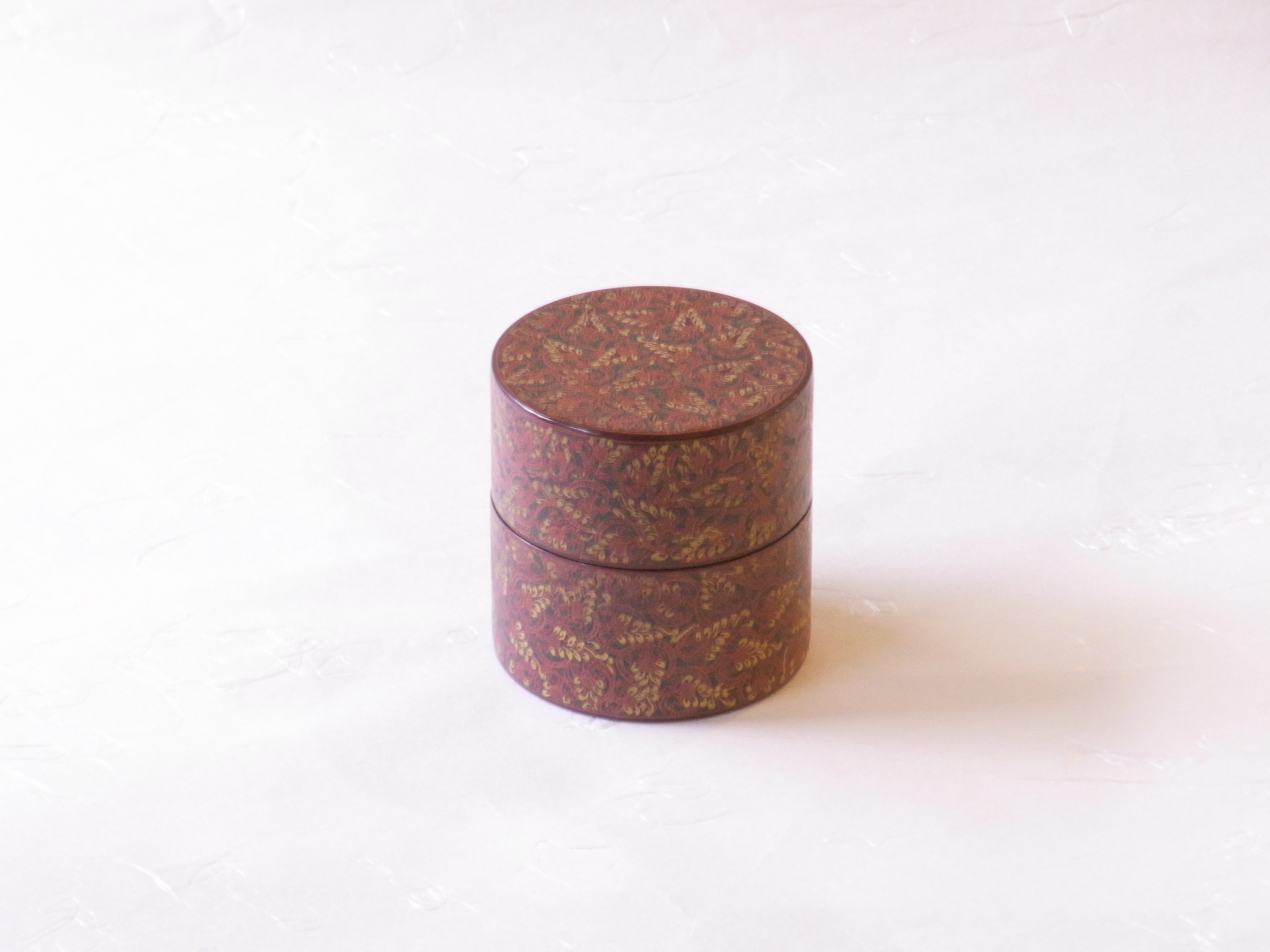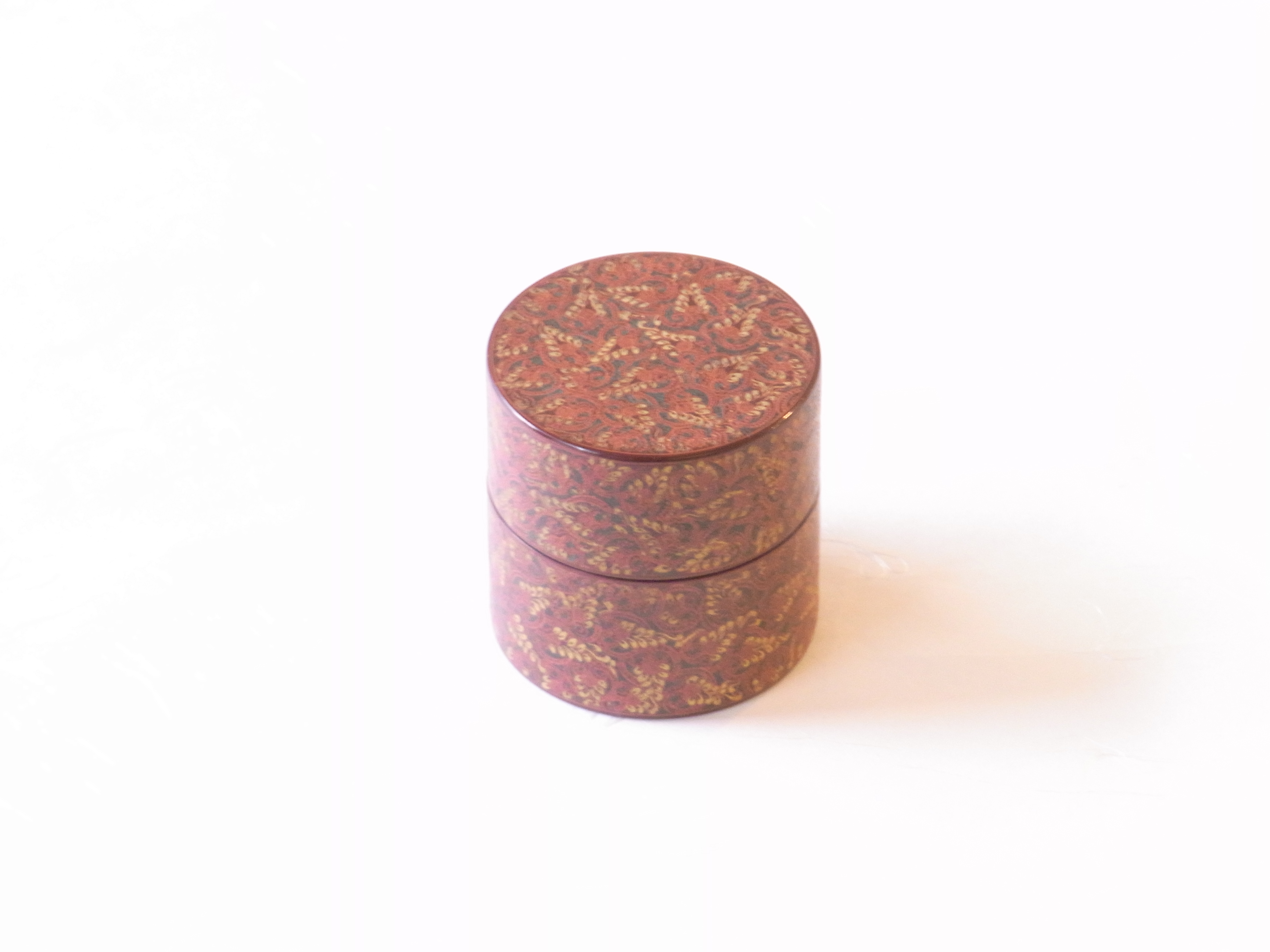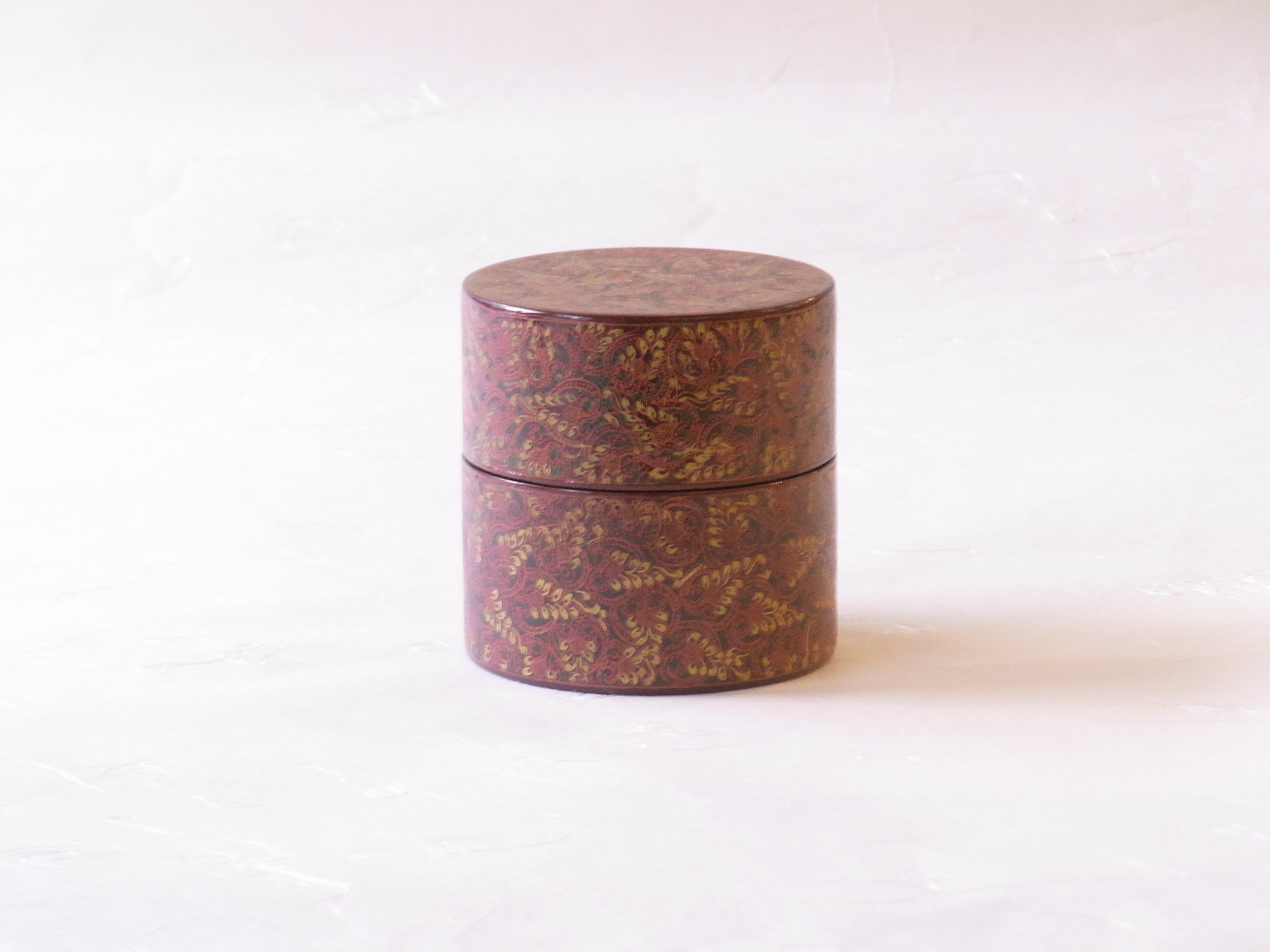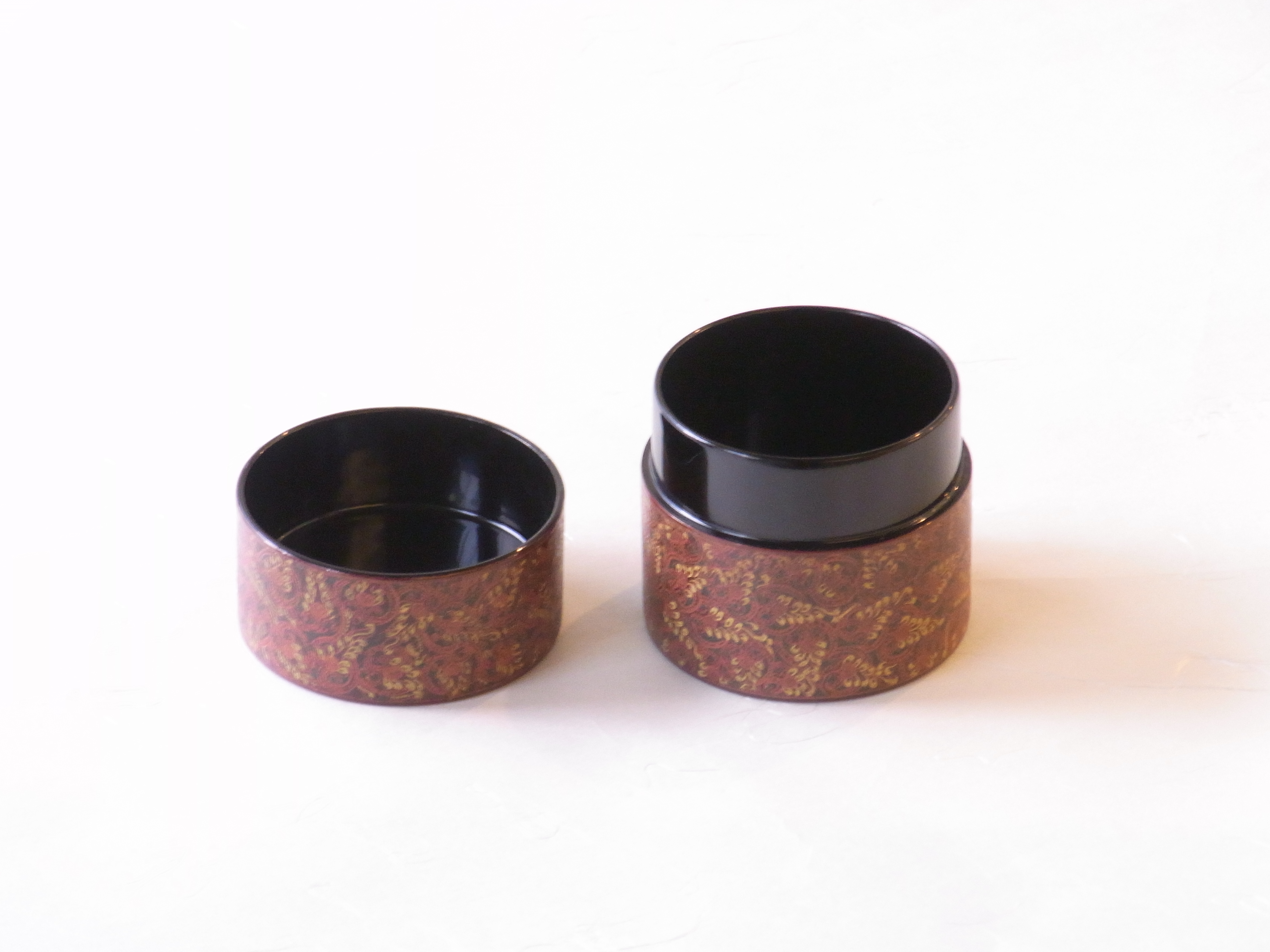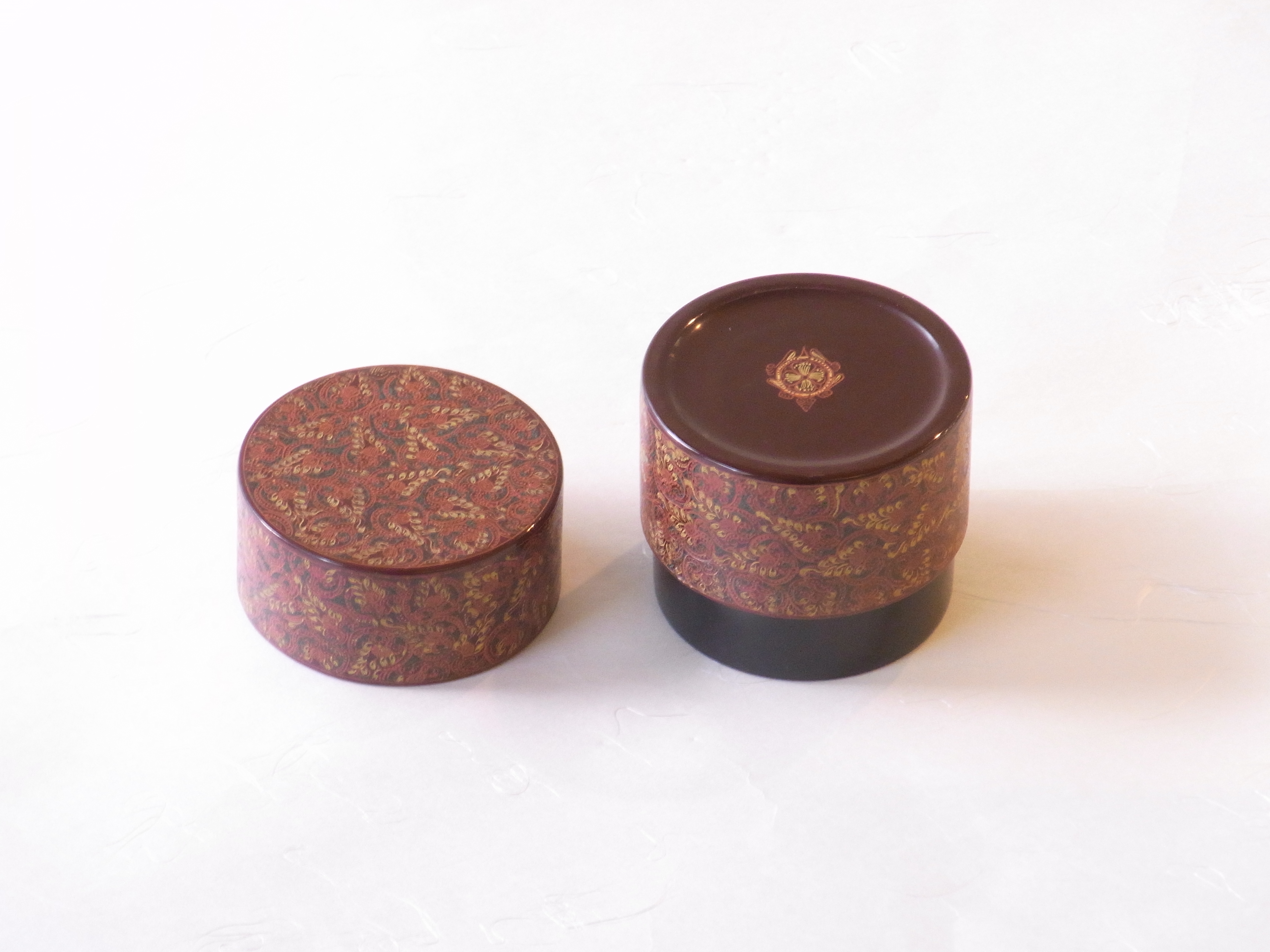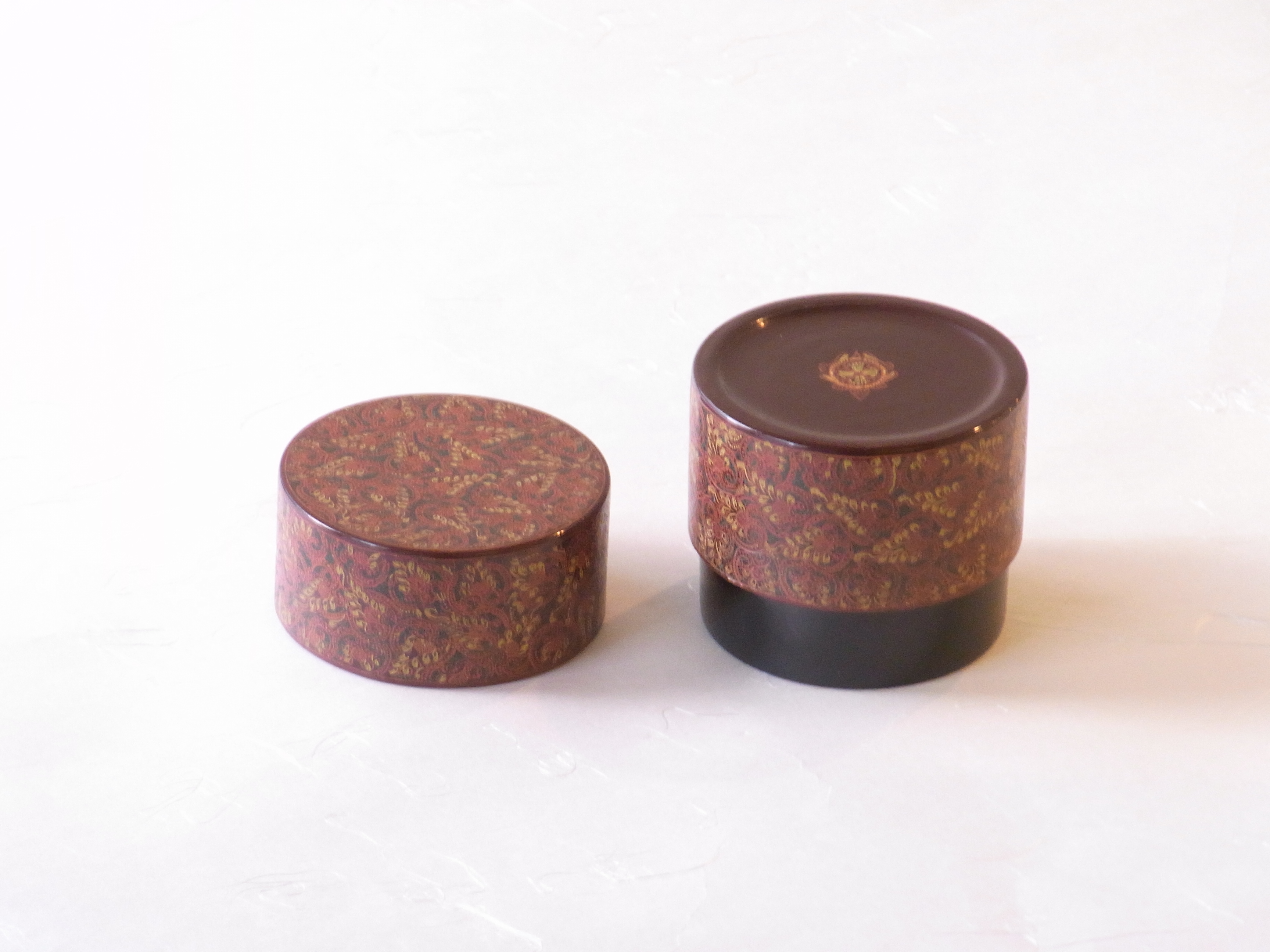ミャンマー製の木製茶器のご紹介です。
キンマという漆技法を使って作られています。
キンマの語源はタイの植物キンマに由来し、これを盛る器の
文様表現技法に特色があったため、その技法を我が国では
キンマと呼ぶようになりました。
木地に堅地を付け、その上から漆を厚く塗り重ね、これにキンマ刀で
模様を彫刻し、その彫口に堅く練った色漆をヘラで摺り込んで
模様以外の漆を研ぎ落して、研炭で文様が鮮明になるまで、
研ぎ出して、油を混ぜた漆を塗って艶を出したものをいいます。
とても細かい彫刻が茶器全面になされており、その細かさに
驚かざるを得ない芸術品といえるものとなっています。
キンマの漆器はその昔タイやビルマなどの上流階級で使用され、
日本にも入ってきたと思われます。
茶器の裏面にも彫がされておりますが、元々の朱の漆塗りが残されており
研ぎ出しの際に付いた擦った跡や、彫りの作業の時に付いたと思われる
細かい筋が複数ございますが、(日本製ではなく)地元ミャンマー製の漆器であるため
何卒ご了承くださいませ。
朱、黄、緑など複数の色漆が使われており、文様も複雑なものとなっています。
径 6.7㎝ 高さ 7㎝
木製 うるし塗
It is an introduction of the wooden tea bowl made in Myanmar.
It is made using a lacquer technique called Kinma.
The etymology of Kinma is derived from the Thai plant Kimma, and
Because there was a characteristic of the pattern expression technique, the technique was
It came to be called Kimma.
A solid ground is attached to the wood base, lacquer is applied thickly from the top, and it is used with a kinma sword to this.
The pattern is carved, and the colored lacquer which was kneaded hard in the engraving is slid with a spatula.
The lacquer other than the pattern is sharpened, and the pattern becomes clear with the abrasive charcoal,
It is a thing that is polished and glazed by applying lacquer mixed with oil.
A very fine sculpture is made on the entire surface of the teaware, and the fineness of the tea ceremony
It can be said that it is a work of art that cannot help being surprised.
Kinma lacquerware was used in the upper classes of Thailand, Burma, etc. in the old days,
I think i’ve come to Japan.
It is carved on the back side of the tea bowl, but the lacquer coating of the original indigo is left.
It seems to have attached at the time of the rubbing mark attached at the time of sharpening, and the work of the carving.
There are several fine streaks, but because it is lacquerware made in Myanmar (not made in Japan)
Thank you for your understanding.
Several colors of lacquer, such as amber, yellow, and green, are used, and the pattern is also complex.
介紹緬甸製造的木制茶具。
它是使用一種叫做Kima的漆器技術製造的。
金馬的詞源來自泰國的植物金馬,
由於這種表達技術的特點,這種技術在我國
現在,我們稱它為金瑪。
硬地在木材上,從上面塗上厚厚的漆,用金馬劍
雕刻圖案,用鏟子揉成硬揉的色帶
銳化除圖案以外的灰塵,直到圖案在木炭中更清晰,
它磨光了,它混合了油,並塗上了灰塵, 說,
非常精細的雕塑已經在茶具的整個表面,其細度
可以說,這是一件藝術品,必須感到驚訝。
金馬漆器在舊時代用於泰國和緬甸等上層階級,
我想他甚至也去過日本。
茶具的背面也雕刻有漆漆。
似乎在雕刻過程中,在銳化時的摩擦痕跡和痕跡。
有幾條細條紋,但因為它是緬甸本地製造的漆器(不是日本製造的)
感謝您的理解。
使用多種顏色,如栗子、黃色和綠色,圖案也很複雜。
介绍缅甸制造的木制茶具。
它是使用一种叫做Kima的漆器技术制造的。
金马的词源来自泰国的植物金马,
由于这种表达技术的特点,这种技术在我国
现在,我们称它为金玛。
硬地在木材上,从上面涂上厚厚的漆,用金马剑
雕刻图案,用铲子揉成硬揉的色带
锐化除图案以外的灰尘,直到图案在木炭中更清晰,
它磨光了,它混合了油,并涂上了灰尘, 说,
非常精细的雕塑已经在茶具的整个表面,其细度
可以说,这是一件艺术品,必须感到惊讶。
金马漆器在旧时代用于泰国和缅甸等上层阶级,
我想他甚至也去过日本。
茶具的背面也雕刻有漆漆。
似乎在雕刻过程中,在锐化时的摩擦痕迹和痕迹。
有几条细条纹,但因为它是缅甸本地制造的漆器(不是日本制造的)
感谢您的理解。
使用多种颜色,如栗子、黄色和绿色,图案也很复杂。
